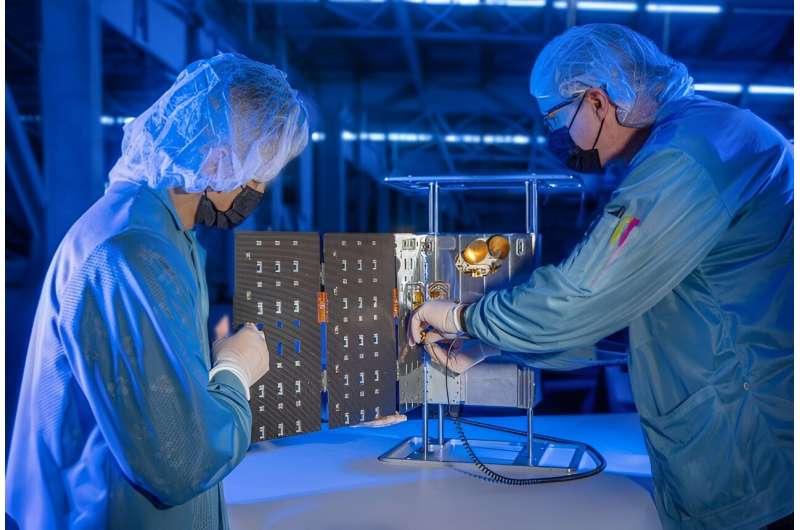This article has been reviewed according to Science X's editorial process and policies. Editors have highlighted the following attributes while ensuring the content's credibility:
fact-checked
trusted source
proofread
NASA's EZIE mission set for 2025 launch

In 2025, NASA will launch its first mission to image the magnetic fingerprint of intense electrical currents that flow high in our atmosphere when auroras shimmer above Earth's poles.
The EZIE (Electrojet Zeeman Imaging Explorer) mission is designed to make groundbreaking measurements of the auroral electrojets, electrical currents about 60 miles (100 kilometers) above the ground in a layer of Earth's atmosphere called the ionosphere, which separates Earth from surrounding space.
The mission features a trio of CubeSats, or small satellites, with an orbit that goes pole to pole to map the electrojets. Mapping the electrojets can give scientists greater insight into the physics of Earth's magnetosphere and help create better models for predicting the effects of space weather phenomena such as geomagnetic storms and auroras in the upper atmosphere and at Earth's surface.
In August, the EZIE team completed its pre-ship review, with NASA confirming that the three spacecraft and their support systems are ready to move to their eventual launch site for liftoff in 2025.
Previously planned for no earlier than 2024, a launch in 2025 gives EZIE the opportunity to make observations during two Northern Hemisphere summers, when EZIE's measurements can best be coordinated with ground-based instruments and when EZIE can make far more observations of the auroral phenomenon scientists are targeting.
The EZIE mission is managed by the Explorers Program Office at NASA's Goddard Space Flight Center in Greenbelt, Maryland. The Johns Hopkins Applied Physics Laboratory designed the EZIE spacecraft and leads and manages the mission for NASA. NASA's Jet Propulsion Laboratory built an instrument called the Microwave Electrojet Magnetogram for each of the three satellites, and Blue Canyon Technologies in Boulder, Colorado, built the CubeSats.
Provided by NASA



















